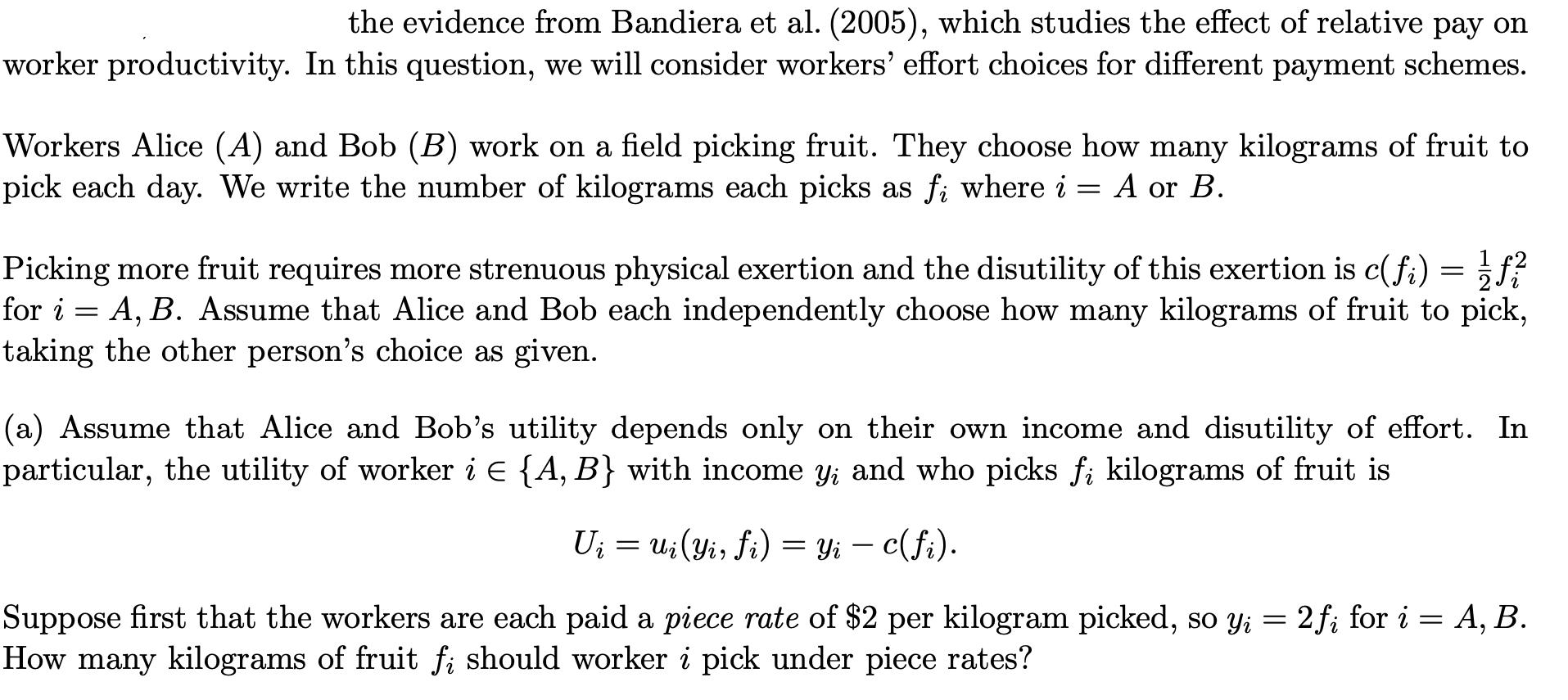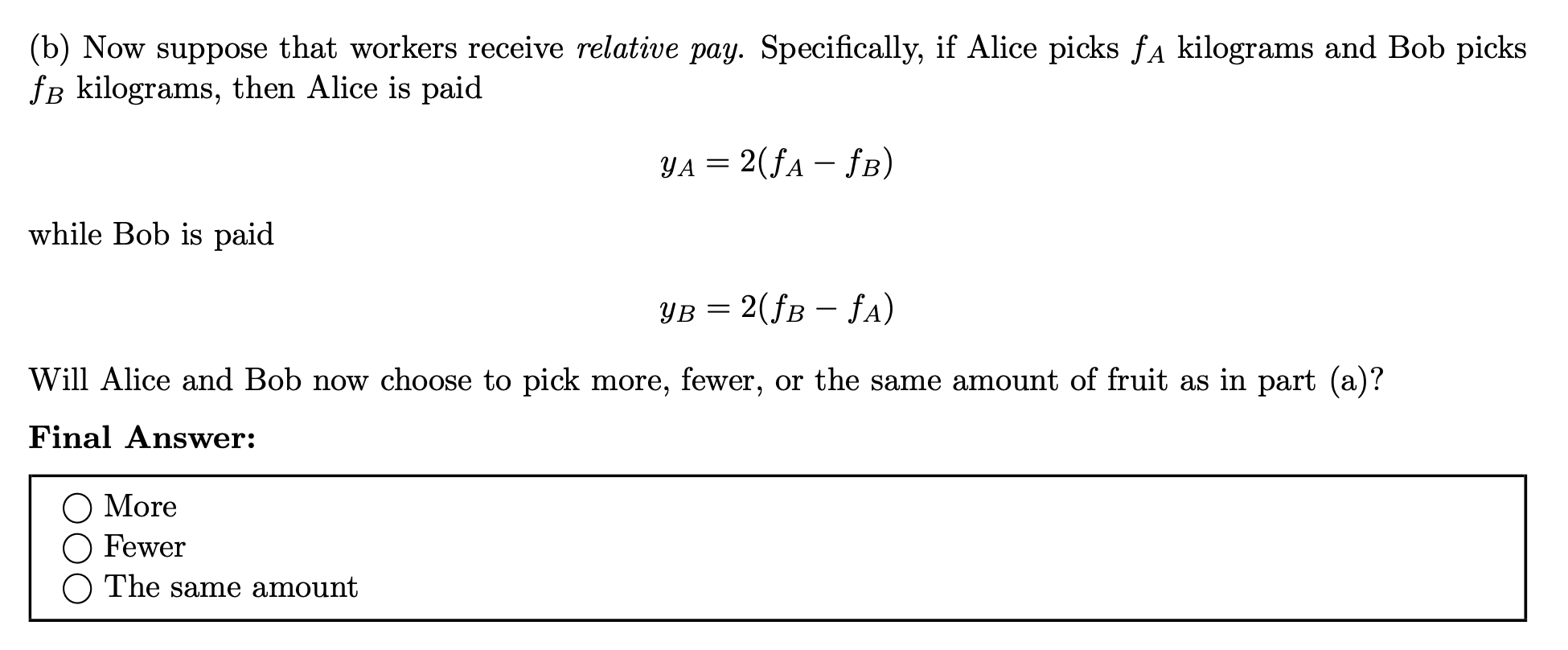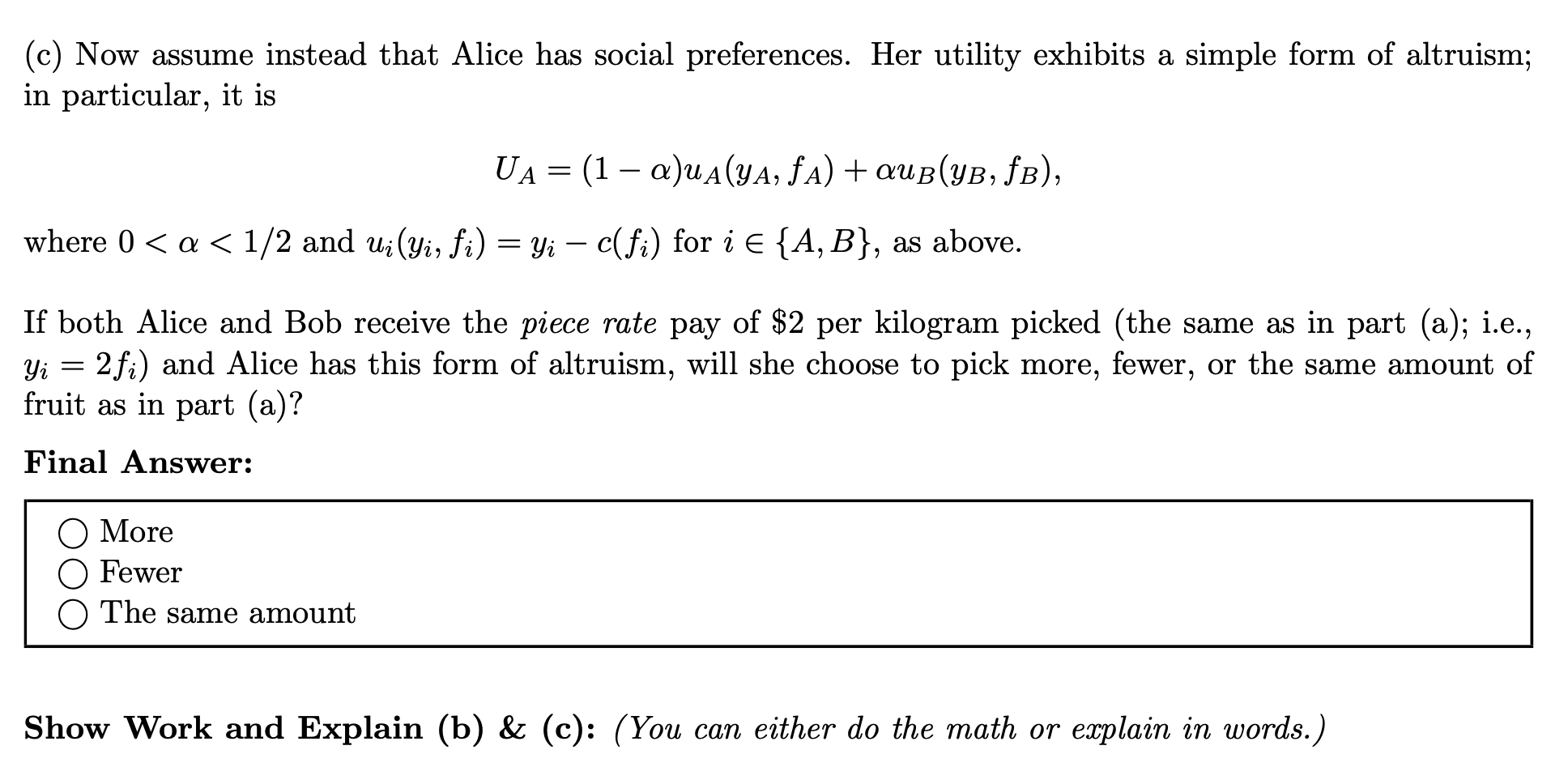Answered step by step
Verified Expert Solution
Question
1 Approved Answer
the evidence from Bandiera et al. (2005), which studies the effect of relative pay on worker productivity. In this question, we will consider workers'



the evidence from Bandiera et al. (2005), which studies the effect of relative pay on worker productivity. In this question, we will consider workers' effort choices for different payment schemes. Workers Alice (A) and Bob (B) work on a field picking fruit. They choose how many kilograms of fruit to pick each day. We write the number of kilograms each picks as fi where i = A or B. 1 Picking more fruit requires more strenuous physical exertion and the disutility of this exertion is c(fi) = f? for i = A, B. Assume that Alice and Bob each independently choose how many kilograms of fruit to pick, taking the other person's choice as given. (a) Assume that Alice and Bob's utility depends only on their own income and disutility of effort. In particular, the utility of worker i {A, B} with income y and who picks fi kilograms of fruit is Ui = Ui (Yi, fi) = Yi c(fi). Suppose first that the workers are each paid a piece rate of $2 per kilogram picked, so y = 2f; for i = A, B. How many kilograms of fruit fi should worker i pick under piece rates? (b) Now suppose that workers receive relative pay. Specifically, if Alice picks f kilograms and Bob picks kilograms, then Alice is paid while Bob is paid YA = 2(fA - B) YB = 2(fB - fA) Will Alice and Bob now choose to pick more, fewer, or the same amount of fruit as in part (a)? Final Answer: More Fewer The same amount (c) Now assume instead that Alice has social preferences. Her utility exhibits a simple form of altruism; in particular, it is - U = (1 a)uA (YA, fA) + QUB (YB, ), - where 0 < a < 1/2 and u(Yi, fi) = Yi c(fi) for i = {A, B}, as above. If both Alice and Bob receive the piece rate pay of $2 per kilogram picked (the same as in part (a); i.e., Yi = 2fi) and Alice has this form of altruism, will she choose to pick more, fewer, or the same amount of fruit as in part (a)? Final Answer: More Fewer The same amount Show Work and Explain (b) & (c): (You can either do the math or explain in words.)
Step by Step Solution
There are 3 Steps involved in it
Step: 1

Get Instant Access to Expert-Tailored Solutions
See step-by-step solutions with expert insights and AI powered tools for academic success
Step: 2

Step: 3

Ace Your Homework with AI
Get the answers you need in no time with our AI-driven, step-by-step assistance
Get Started


